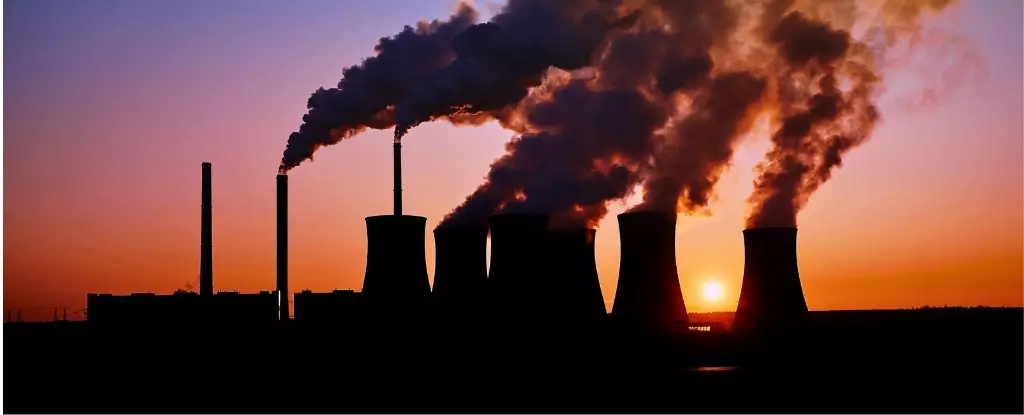Recent findings from two pivotal global studies have underscored a chilling truth—our planet has likely crossed the critical threshold of 1.5°C concerning global warming. This threshold is central to the Paris Agreement established in 2015, where the goal was to cap global temperature rise to prevent catastrophic climate consequences. Unfortunately, reports indicate that 2024 saw average temperatures surpass this limit, bringing humanity to a precarious point in its environmental stewardship. This situation not only highlights the urgency of the climate crisis but also raises questions about the effectiveness of our ongoing efforts.
The 1.5°C limit, determined based on pre-industrial average temperatures, serves as a benchmark to gauge humanity’s success or failure in mitigating climate change. While the average temperature spike in 2024 was not definitive evidence of a permanent breach since the Paris Agreement’s criteria depend on long-term fluctuations, the studies suggest a more alarming perspective. Analyzing historical data shows a pattern: past instances of significant warming are likely to forecast further breaches of this critical temperature threshold.
The crux of both studies emerged from distinct analyses of temperature data. Research teams from Europe and Canada examined recent warming trends through different lenses, yet arrived at a similar conclusion: we’ve entered an era where exceeding the 1.5°C limit is increasingly probable. As evidence mounts, it becomes clear that we are on a worrisome trajectory.
Global Temperature Dynamics: Year-to-Year Variations
The conversation around average temperature increases can be complex. Annual variations exist due to natural phenomena like the El Niño effect, which temporarily boosts temperatures. For instance, the 2024 spike, partly attributed to this weather pattern, was nevertheless alarming since it suggests systemic changes in our climate systems. Despite predictions of a return to cooler approximations in 2025, this does not mitigate the broader concerns of consistent temperature increases.
Climate scientists warn against interpreting a single year’s temp spike as a failure to meet the Paris Agreement. Instead, studies indicate that a series of warm years, particularly consecutive months above the 1.5°C threshold, reveal a pattern of uncharted warming that may foreshadow long-term shifts. The implications of these findings are profound, suggesting that the path to global temperature stabilization may be fundamentally flawed.
Given the trajectory of emissions and the latest climate data, the urgency for action cannot be overstated. A disheartening record indicates that greenhouse gas emissions have risen significantly since the Intergovernmental Panel on Climate Change’s (IPCC) inaugural report in 1990. A 50% increase in annual carbon emissions illustrates not only our slow progress but also raises questions about how effectively we are addressing the climate emergency.
The path toward mitigating global warming now leans heavily toward achieving net-zero emissions, yet mere stagnation is not sufficient—it requires aggressive reductions and the cultivation of a paradigm where we remove more greenhouse gases than we emit. The prospect of achieving ‘net-negative emissions’ presents substantial challenges requiring a multifaceted approach encompassing technological innovation, policy reform, and social shifts.
The repercussions of climate change are already manifesting globally. Countries like Australia report an average warming of 1.5°C since the 20th century. This warming has elicited severe consequences on natural ecosystems, including the deterioration of biodiversity and rising ocean temperatures affecting marine habitats. Weather events such as prolonged heatwaves and devastating bushfires are becoming commonplace, emphasizing the immediate impacts on nature, society, and the economy.
However, amidst these challenges, there are promising developments. Efforts to transition to renewable energy sources are on the rise, and a reduction in fossil fuel reliance is being noted in various regions. Furthermore, advancements in technology are beginning to slow down emissions across key industries, indicating a potential pathway forward in curbing climate degradation.
The studies highlighting the irreversible leap past the 1.5°C threshold serve as a warning bell for humanity. They illuminate the critical necessity for immediate action to avoid further environmental degradation. While there is a sense of urgency, we must also prioritize support and adaptation for nations disproportionately affected by climate repercussions. The call for action is not merely about meeting numerical targets; it is also about fostering global solidarity and ensuring an equitable transition to a more sustainable future.
The clock is ticking, and the moment for decisive action and comprehensive change is now. As communities, nations, and a global society, the path we choose in the coming years will be pivotal in determining not only the fate of our environment but also the legacy we leave for future generations.


Leave a Reply